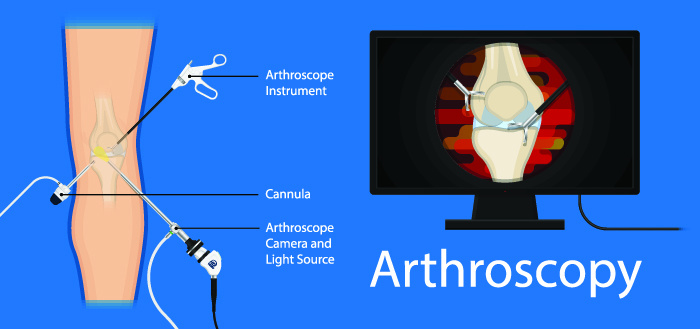Minimally Invasive Knee Replacement Surgery in Tardeo, Mumbai
Introduction
A group of muscles called Quadriceps muscle located in the front of the thigh connected to the knee cap through the quadriceps tendon. They control the movement of the knee and hence are highly essential to walk normally. In Minimally Invasive Knee Replacement Surgery, a very small incision is made in the quadriceps tendon that eases the recovery. MIKRS aims at removing damaged cartilage, soft tissues, and bones from the surface of the knee. To know more about the procedure search for ortho doctors near me or orthopaedic hospitals near me.

What are the Reasons to undergo Minimally Invasive Knee Replacement Surgery (MIKRS)?
There can be many reasons for you to undergo Minimally Invasive Knee Replacement Surgery:
- Severe pain due to Osteoarthritis
- Problem in walking, and climbing stairs
- Pain in the knee while resting
- Restricted mobility of the legs
- Bone tumor in knee joint
- Injury in knee joint
Who can undergo Minimally Invasive Knee Replacement Surgery (MIKRS)?
If you are young, physically fit, and healthy, then you will be allowed to undergo Minimally Invasive Knee Replacement Surgery. If you are old, obese, and already have knee replacement surgery, then you might not be allowed for MIKRS.
When to see a doctor
If you have been constantly suffering from intense pain, and swelling in the knee, then you must consult your doctor. Due to tearing of the cartilage, and in the need of quick healing, you must go through Minimally Invasive Knee Replacement Surgery (MIKRS). Consult best ortho doctors or orthopaedic hosp[itals in Mumbai
Request an appointment at Apollo Hospitals
Call 1860 500 2244 to book an appointment.
Preparing for Minimally Invasive Knee Replacement Surgery (MIKRS)
You must avoid eating anything after midnight the day of the surgery. You will be administered with either general anesthesia or spinal anesthesia for sedation. Along with this, antibiotics are given intravenously during and after the surgery to prevent post-surgical infection.
How is Minimally Invasive Knee Replacement Surgery (MIKRS) done?
During Minimally Invasive Knee Replacement Surgery (MIKRS), a small incision of size 4-6 inches is made to move aside your knee cap and cut damaged joint surfaces. Due to the small incision, trauma to the quadriceps tendon and muscles is reduced. Special instruments are used to prepare the femur and tibia. This leads to the proper placement of joints with the help of artificial implants. After attaching the artificial implant at the knee joint a plastic spacer is inserted into the space between the implant. The doctor will bend and rotate your knee to check the proper functioning. After this, the incision will be closed with the stitches.
Benefits of Minimally Invasive Knee Replacement Surgery (MIKRS)
During Minimally Invasive Knee Replacement Surgery (MIKRS), a small incision leads to less disturbance to the soft tissues in the knee. This results in lesser pain after the surgery, hence reduced recovery time.
Risks or Complications related to Minimally Invasive Knee Replacement Surgery (MIKRS)
Although MIKRS is safe, yet there are many risks associated with it like:
- Infection
- Fever and chills
- Stroke
- Redness, swelling, and pain in the knee
- Nerve damage
- Blood clotting in leg vein or lungs
- Nerve damage
- Premature implant loosening
What After Minimally Invasive Knee Replacement Surgery (MIKRS)?
After the surgery, you must move your foot and ankle to increase the blood flow in the legs muscles, preventing clotting, and swelling. You have to take blood-thinning medicines and walk-in compression boots to reduce the pressure and swelling in the knee. Perform frequent breathing exercises, and eventually increase your activity.
Conclusion
Unlike traditional knee replacement surgery, MIKRS is minimally invasive and performed by a well-trained orthopedic surgeon. Although there might be some risks associated with MIKRS, it causes less damage to the tissues and leads to faster recovery. Minimally Invasive Knee Replacement Surgery has long-term benefits, affordable, less painful, and highly effective.
No, Minimally Invasive Knee Replacement Surgery is usually performed on young people of age around 50. You must not be obese or overly muscular if you are undergoing MIKRS.
After the surgery, you must shower using a rubber mat or chair. Always use a handrail while climbing the stairs or going down. Walk very carefully on a smooth floor and wear trousers or shorts slowly to avoid any jerk on the legs.
With advanced implants and minimally invasive surgery, knee replacement works efficiently for around 15-20 years. The success rate of Knee replacement surgery is very high. Sometimes when the implants fail to work, you must undergo another surgery to fix it.
Sometimes after the knee replacement surgery, scar tissues build up inside the knee resulting in shrinkage and tightening of the knee joint.
Symptoms
Our Top Specialities
NOTICE BOARD
CONTACT US
CONTACT US
 Book Appointment
Book Appointment


.svg)
.svg)
.svg)
.svg)








